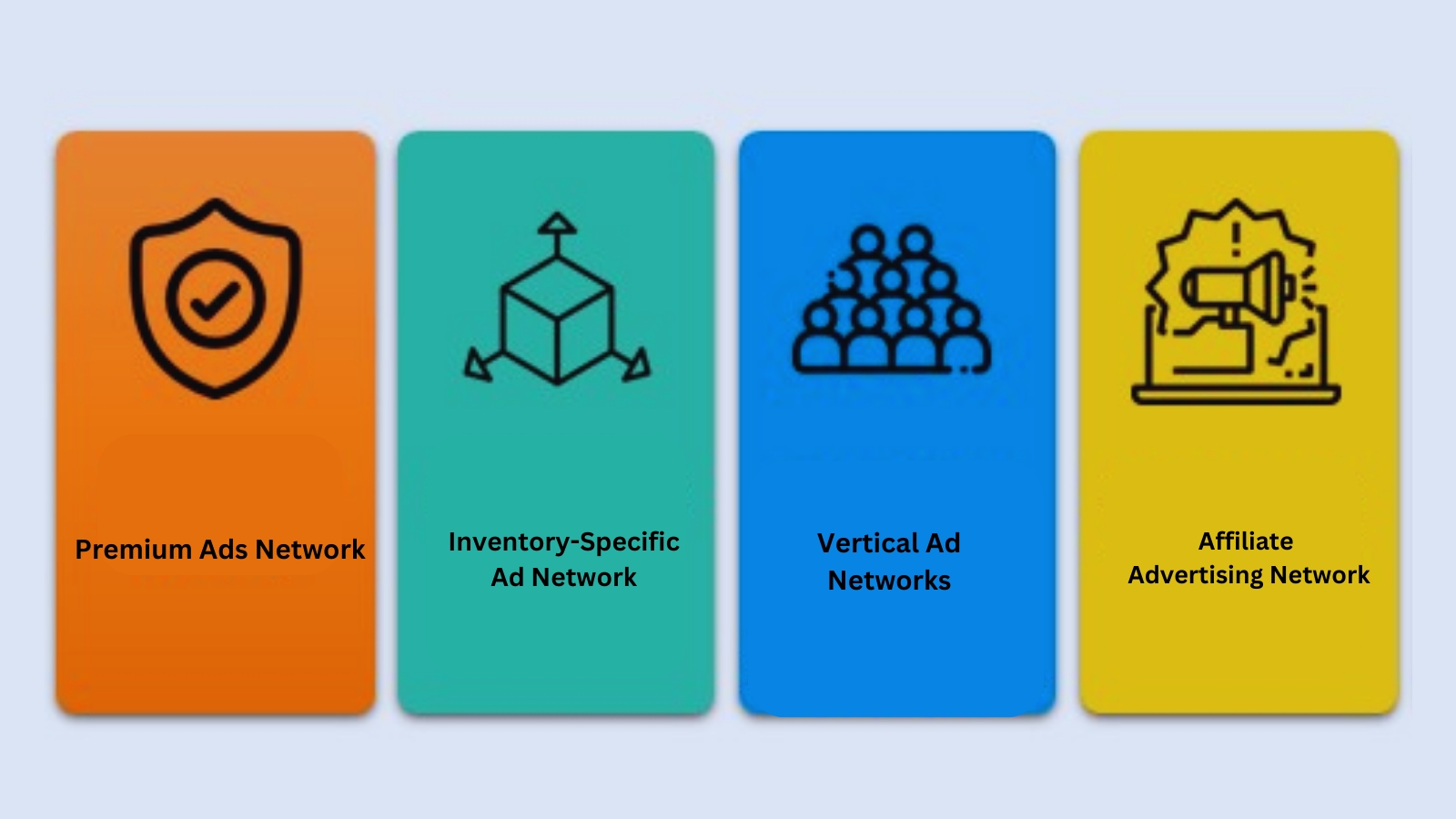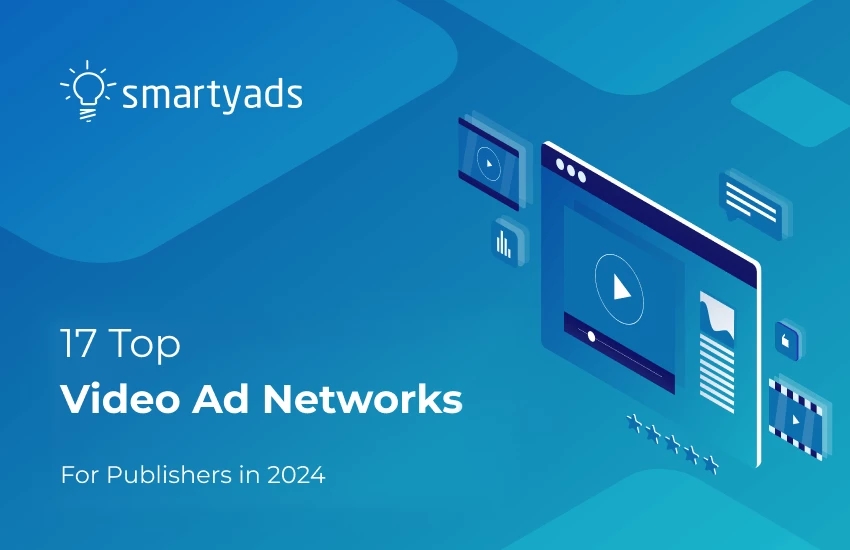How to Maximize Your Ad Revenue
Buy CPC Traffic | Buy Display Ads | Exclusive traffic sources | Buy Push Ads | Popunder ADS | Buy Native Ads | Buy Preroll Ads

Buy CPC Traffic | Buy Display Ads | Exclusive traffic sources | Buy Push Ads | Popunder ADS | Buy Native Ads | Buy Preroll Ads
Whether you're a small-time blogger or an established online publisher, maximizing your ad revenue is always a top priority. One of the best ways to do that is by partnering with a reliable and effective video ad network. Video ads have become increasingly popular in recent years, with more and more advertisers turning to this format to engage their target audience.
But with so many video ad networks out there, how do you choose the right one for your website? That's where this ultimate guide comes in. We've done the research and compiled a list of the top video ad networks for publishers, so you can make an informed decision and start generating more revenue from your ad inventory.
What is a video ad network?
Before we dive into the details of each video ad network, let's quickly define what a video ad network is. In simple terms, a video ad network is a platform that connects publishers and advertisers, allowing publishers to monetize their video content by displaying video ads. These networks provide publishers with a way to sell their ad inventory and earn revenue, while advertisers get access to a wide range of websites and target audiences.
Why should you partner with a video ad network?
Partnering with a video ad network offers several benefits for publishers. Firstly, it allows you to tap into a larger pool of advertisers, increasing the chances of finding relevant ads for your audience. Additionally, video ad networks typically offer advanced targeting options, enabling you to show ads to specific demographics, interests, or locations. This level of customization can lead to higher engagement and click-through rates, ultimately boosting your ad revenue.
Maximizing Revenue with Video Ad Networks for Publishers
Video ad networks are a powerful tool for publishers looking to maximize their revenue. By partnering with the right video ad network, publishers can take advantage of the growing demand for video ads and unlock new streams of income. Here are some key strategies for maximizing revenue with video ad networks:
1. Diversify your ad inventory

One of the best ways to maximize revenue is to diversify your ad inventory. By offering a variety of ad formats, such as in-stream, out-stream, and push ads, you can attract a wider range of advertisers and increase competition for your ad space. This can drive up the value of your inventory and ultimately boost your revenue.
2. Optimize ad placements

Ad placement plays a crucial role in revenue optimization. Experiment with different ad placements and monitor their performance to identify the positions that generate the highest revenue. You may find that placing ads at the beginning or end of videos, or incorporating them into the content itself, yields better results. Additionally, consider implementing header bidding to increase competition among advertisers and maximize your revenue potential.
3. Leverage audience targeting

Another strategy for maximizing revenue with video ad networks is to leverage audience targeting. By offering advertisers the ability to target specific demographics, interests, or behaviors, you can attract more relevant ads that generate higher engagement and ROI. This increased performance can lead to higher payouts and increased revenue for your publishing business.
By implementing these strategies and partnering with a reputable video ad network, publishers can maximize their revenue potential and take their monetization efforts to the next level.
The Importance of Choosing the Right Video Ad Networks

Choosing the right video ad networks can make a significant difference in the revenue generated from your website or app. As a publisher, it is essential to take the time and effort to select the most suitable video ad networks to maximize your ad earnings.
One of the key reasons why choosing the right video ad networks is important is because it directly impacts the monetization potential of your content. Different ad networks have various advertisers, demand partners, and ad formats, which can significantly affect the ad fill rate, eCPM, and overall revenue.
A high-quality video ad network can:
Provide access to a wide range of premium advertisers and demand partners, increasing the chances of securing high-budget advertising campaigns.
Offer multiple ad formats and placements to match your content and engage your audience effectively.
Optimize ad delivery based on user behavior, ensuring relevant and personalized ads for a higher click-through rate.
Offer advanced targeting options, such as demographic, geographic, or behavioral targeting, to increase the effectiveness of ad campaigns and improve user experience.
Deliver timely and accurate ad reporting and analytics, allowing you to identify trends, measure performance, and make data-driven decisions.
Provide reliable technical support and assistance in resolving any issues or concerns promptly.
However, choosing the wrong video ad networks can lead to lower fill rates, lower eCPMs, and ultimately lower revenue. It can also result in ads that are irrelevant, intrusive, or disruptive to the user experience, leading to decreased user engagement and potential loss of audience.
When selecting video ad networks, it is crucial to consider factors such as the ad network's reputation, reach, ad quality, support, and payment terms. Researching and testing different networks can help you identify the ones that best align with your goals and target audience.
In conclusion, selecting the right video ad networks is vital for publishers looking to maximize their ad revenue. By partnering with high-quality networks that offer premium advertisers, multiple ad formats, advanced targeting options, and reliable support, publishers can optimize their monetization efforts and provide a seamless and engaging user experience.
Understanding Different Types of Video Ad Formats
When it comes to video ad formats, there are several options available to publishers. Each format has its own unique characteristics and can be used to target specific audiences or achieve different advertising goals. Here are some of the most common video ad formats:
1. Pre-Roll Ads
Pre-roll ads are short video ads that play before the main video content. They are typically non-skippable and can be an effective way for advertisers to grab viewers' attention right from the start. However, pre-roll ads can also be seen as interrupting the user experience, so it's important to carefully consider their placement and duration.
2. Mid-Roll Ads

Mid-roll ads are video ads that appear in the middle of a video. They are usually skippable after a few seconds, and can be a good option for longer videos or content with multiple breaks. However, it's important to strike a balance between ad frequency and user experience to avoid frustrating viewers.
3. Outstream Ads
Outstream ads are video ads that play within non-video content, such as articles or social media feeds. They are typically auto-playing and can be either in-stream or in-banner. Outstream ads offer additional ad inventory for publishers and can be less disruptive to the user experience than other formats.
4. Native Video Ads
Native video ads are designed to match the look and feel of the surrounding content. They blend in seamlessly with the publisher's website or app, and can be embedded within editorial content or recommended video sections. Native video ads offer a more organic and less intrusive advertising experience.
5. Popunder Ads
Popunder ads are a type of video ad format that appear in a new browser window, typically hidden behind the current window. They are triggered by user actions, such as clicking on a link, and can be an effective way to capture attention. However, popunder ads can be seen as intrusive and may disrupt the user experience, so it's important to use them carefully and considerately.
Overall, understanding the different types of video ad formats can help publishers make informed decisions about their advertising strategies. By choosing the right format for their audience and content, publishers can maximize their ad revenue while maintaining a positive user experience.
How to Optimize Ad Placement for Maximum Revenue
Optimizing ad placement is crucial for publishers to maximize their revenue. By strategically placing ads on your website, you can increase visibility, engagement, and ultimately, ad revenue. Here are some tips to help you optimize your ad placement:
1. Analyze User Behavior
Start by analyzing your website's user behavior to identify high-traffic areas and popular content. Use tools like Google Analytics to gather data on user engagement, click-through rates, and session duration. This data will help you understand where your users are spending the most time and where they are likely to interact with ads.
2. Consider User Experience
While optimizing ad placement, it's important to consider the user experience. Placing too many ads or having intrusive ad formats can negatively impact user experience and deter visitors from returning to your site. Find a balance between ad visibility and user satisfaction by avoiding excessive ads and selecting non-intrusive ad formats.
3. Test Different Ad Positions
Conduct A/B tests to determine the most effective ad positions for your website. Experiment with different placements such as above the fold, within the content, in the sidebar, or at the end of a page. Monitor performance metrics and compare the results to identify the positions that drive higher engagement and revenue.
4. Use Responsive Ad Units
In today's mobile-dominated world, responsive ad units are essential for optimizing ad placement. Responsive ads automatically adjust their size and layout based on the device and screen size, ensuring a seamless user experience across different platforms. Implementing responsive ad units will help you reach a wider audience and increase your ad revenue.
Remember to comply with ad network guidelines and policies when placing ads on your website. Ad placement optimization requires continuous monitoring and adjustment based on user feedback, performance metrics, and industry trends. By finding the right balance between user experience and ad visibility, you can maximize your ad revenue and create a sustainable monetization strategy.
Key Factors to Consider When Monetizing Your Videos
Monetizing your videos can be a great way to generate revenue and maximize your earnings as a publisher. However, there are several key factors to consider when choosing a video ad network to work with. These factors can greatly impact your overall ad revenue and success. Here are some important considerations:
1. Ad Types
When selecting a video ad network, it's important to consider the types of ad formats they offer. Different ad formats, such as pre-roll, mid-roll, and post-roll, have different viewer engagement and revenue potentials. Assess your target audience and content to determine which ad types would best suit your needs.
2. Targeting Options

Effective targeting is crucial for maximizing ad revenue. Look for video ad networks that offer robust targeting options such as demographic, geographic, and behavioral targeting. The more precise your targeting, the higher the likelihood of delivering relevant ads to your viewers, resulting in increased engagement and revenue.
3. Ad Quality

Ensure that the video ad network you choose maintains high-quality standards for their ads. Low-quality or irrelevant ads can negatively impact the user experience and discourage viewers from engaging with your content. Choose a network that screens and approves ads to maintain a high level of quality.
4. Reporting and Analytics
To effectively optimize your monetization efforts, it's important to have access to detailed reporting and analytics. Look for a video ad network that provides comprehensive reporting on ad performance, viewer engagement, and revenue. This data will help you make data-driven decisions to improve ad revenue.
5. Payment Terms
Consider the payment terms offered by the video ad network. Some networks offer revenue sharing models, while others may pay on a cost-per-impression (CPM) or cost-per-click (CPC) basis. Evaluate the payment terms and choose the option that aligns with your revenue goals and preferences.
Consideration 1
Consideration 2
Consideration 3
In conclusion, choosing the right video ad network is crucial for maximizing your ad revenue. Take the time to evaluate the key factors mentioned above and find the network that aligns with your goals and offers the best opportunities for monetizing your videos effectively.
Best Practices for Implementing Video Ad Networks
Implementing video ad networks effectively is crucial for publishers looking to maximize their ad revenue. By following these best practices, publishers can ensure a seamless integration of video ad networks into their websites.
1. Choose the Right Video Ad Network

Selecting the right video ad network is foundational for successful implementation. Consider factors such as the ad network's reputation, ad formats offered, targeting options, and revenue sharing models. Look for ad networks that align with your website's content and audience demographics.
2. Optimize Ad Placement
Strategically placing video ads can significantly impact viewer engagement and revenue generation. Experiment with different ad placements, such as pre-roll, mid-roll, and post-roll, to find the most effective approach for your website. Avoid intrusive ad placements that may detract from the user experience.
3. Balance Ad Quantity and User Experience
While having more video ads may increase potential revenue, it is important to strike a balance between ad quantity and user experience. Excessive ads can lead to higher bounce rates and decreased user satisfaction. Consider limiting the number of ads per page and ensuring a smooth user experience.
4. Monitor Ad Performance
Regularly monitoring ad performance is crucial for optimizing revenue. Use video ad network reporting tools to gain insights into metrics such as fill rate, click-through rate, and viewability. Analyze this data to make informed decisions about ad formats, placements, and targeting options.
5. Implement Ad Quality Controls
To maintain a positive user experience, implement ad quality controls. Work with your video ad network to monitor ad content and ensure it meets your standards. This includes avoiding offensive, misleading, or irrelevant ads that may alienate your audience.
Overall, implementing video ad networks requires careful consideration of the ad network, ad placement, user experience, performance monitoring, and quality control. By following these best practices, publishers can optimize their ad revenue while maintaining a positive user experience on their websites.
Maximizing Revenue: Case Studies and Success Stories
When it comes to maximizing ad revenue, there is no one-size-fits-all approach. Every publisher has different goals and strategies that work for them. However, by looking at case studies and success stories from other publishers, you can gain valuable insights and ideas on how to optimize your own revenue streams.
Rise in Revenue with Programmatic Advertising

One success story comes from a popular news website that implemented programmatic advertising. By utilizing real-time bidding and automated systems, they were able to increase their revenue by 50% in just six months. The key to their success was understanding their audience and using data-driven insights to target ads effectively. This case study showcases the power of programmatic advertising in maximizing revenue.
Optimizing Ad Placement for Higher CTRs
Another success story comes from a lifestyle blog that focused on optimizing ad placements for higher click-through rates (CTRs). By strategically placing ads within the content and leveraging user behavior data, they saw a significant increase in CTRs which resulted in a 30% boost in ad revenue. This case study highlights the importance of ad placement and the impact it can have on revenue generation.
While these case studies provide valuable insights, it's important to note that what works for one publisher may not work for another. It's crucial to experiment, test, and iterate on different strategies to find the most effective revenue-maximizing approach for your specific audience and content. Constantly monitoring and analyzing the performance of your ads will help you identify areas for improvement and make data-driven decisions to optimize your revenue streams.
Remember, maximizing revenue is an ongoing process that requires constant adaptation and optimization. By staying informed about industry trends and learning from the success stories of other publishers, you can continuously iterate and improve your strategies to generate the maximum ad revenue possible.
What are video ad networks for publishers?
Video ad networks for publishers are platforms that connect publishers (website owners or app developers) with advertisers looking to display video ads on their platforms. These networks help publishers maximize their ad revenue by providing them with a wide range of video ad inventory.
How do video ad networks work?
Video ad networks work by serving video ads to publishers based on their target audience, location, and the content of their platforms. Advertisers bid for the ad space, and the video ad network selects the highest bidder to display their video ads on the publisher's platform. Publishers earn revenue based on the number of ad impressions or clicks their video ads receive.
What are the benefits of using video ad networks for publishers?
Using video ad networks can benefit publishers in several ways. Firstly, it allows them to monetize their platforms by displaying video ads and earning revenue. Secondly, video ad networks usually have a large pool of advertisers, providing publishers with a wide range of ad inventory to choose from. Lastly, these networks often have advanced targeting capabilities, allowing publishers to display relevant video ads to their audience, thus increasing engagement and revenue.
How can publishers maximize their ad revenue with video ad networks?
Publishers can maximize their ad revenue with video ad networks by following several strategies. Firstly, they should focus on optimizing their video ad placements, such as placing video ads in high-visibility areas of their platforms. Secondly, publishers should experiment with different ad formats and sizes to see which ones perform best on their platforms. Lastly, they can leverage the targeting capabilities of video ad networks to display relevant ads to their audience, which can lead to higher engagement and click-through rates.
Are there any drawbacks to using video ad networks for publishers?
While video ad networks offer many benefits, there are some drawbacks to consider. One drawback is that publishers have less control over the video ads displayed on their platforms, as the selection is typically done by the ad network. This means that some ads may not align with the publisher's content or may not be well-received by their audience. Additionally, the revenue sharing model of video ad networks means that publishers only receive a portion of the revenue earned from the ads displayed on their platform.
Which video ad networks are the best for publishers?
There are several top video ad networks that are known for their high ad revenue potential for publishers. Some of the best include Google AdSense, Facebook Audience Network, AdMob, and AppLovin.
How can I maximize my ad revenue with video ad networks?
To maximize your ad revenue with video ad networks, there are several strategies you can follow. These include optimizing your website or app for ads, using different ad formats, targeting the right audience, and continuously testing and improving your ad placements.
What are the key factors to consider when choosing a video ad network?
When choosing a video ad network, it is important to consider several factors. These include the network's ad fill rate, eCPM (effective cost per mille), targeting options, payment terms, and the network's reputation and reliability. It is also essential to evaluate the network's support and tools provided for publishers.
Buy CPC Traffic | Buy Display Ads | Exclusive traffic sources | Buy Push Ads | Popunder ADS | Buy Native Ads | Buy Preroll Ads
2022-2024 @ Maximize Your Ad Revenue: The Ultimate Guide to Video Ad Networks for Publishers